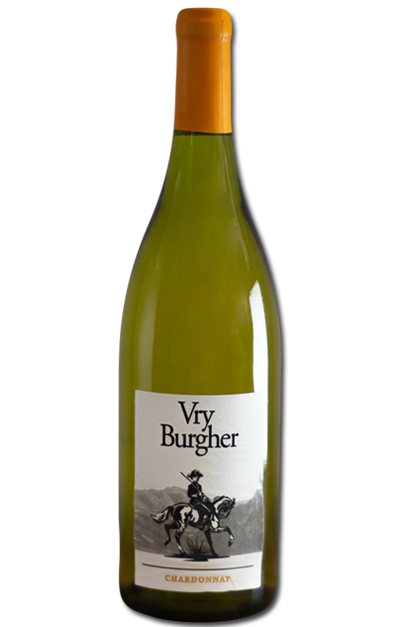CHARDONNAY
Vry Burgher
Subtle aromas of yellow peach and lime are augmented with the rich taste of citrus and gently cushioned by enticing lees flavours. This sublimely delicious Chardonnay pairs very well with white meat dishes, seafood, pasta and all soft cheeses.
The Robertson wine valley is an excellent wine-growing area of fairly flat terrain running alongside the Brede river. It is nestled at the foothills of the Langeberg and Sonderend mountain ranges, where the landscape changes to that of rolling hills. The most dominant soil types are the Red clay loam and clay Karoo, often very calcareous, but with excellent water retention and wine-growing quality. Spring is a new growing time and in summer more frequent irrigation is required. Summer is also the harvesting time which begins from the end of January and Chardonnay is one of the early ripening varietals.
The Vry Burgher Chardonnay is cold harvested in the early morning with only brief skin contact. The juice is free running and there is a gentle press fraction. This requires overnight settling. The wine then undergoes clear juice fermentation with Saccharomyces bayanus yeast in temperature-controlled stainless-steel vessels. Racking takes place following fermentation, and the wine is kept on very fine lees. This is an unoaked Chardonnay.

Chardonnay is the crème de la crème of white wines, rich in flavour, aroma and appearance and when as expertly made as is the Vry Burgher, it is indescribably noble. Multiple award-winning Winemaker Nicky Versfeld, with an uncanny ability to select the finest grapes at the best prices, has once again triumphed with this excellent Chardonnay available to the public at an affordable price. Already an expert with Sauvignon blanc and Cabernet Sauvignon varietals he succeeds admirably with a Chardonnay that is both familiar, with the enticing flavour of the grape, but unique in quality and expertly fashioned taste.
ALC: 13.92
TA: 6.92
RS: 2.86
PH: 3.51
VA: 0.47
Download Tasting Note
About the area
The Robertson Wine valley
Running along the Breede River between the Langeberg and Riviersonderend mountain ranges Robertson is part of the Brede River valley. It is affectionately named the 'valley of vines and roses' and renowned for the breeding of champion racehorses, but the Robertson district's lime-rich soils make it eminently suitable for winegrowing too. It is nestled at the foothills of the Langeberg and Sonderend mountain ranges, where the landscape changes to that of rolling hills.
Robertson has always been considered to be white-wine territory and known mainly for its Chardonnay and more recently for the quality of its Sauvignon blanc. Only more recently it has increasingly gained recognition for some very good red wines, particularly Cabernet Sauvignon and Shiraz.
The district of Robertson incorporates several wards which indicates the great variety of soil types in the valley. As result Robertson has the third most vineyard plantings in South Africa. The valley offers many attractions and is not only famous for its wine but also attracts action-adventure enthusiasts with a variety of activities like rafting, hiking and mountain biking.
Landscape, aspect & general information
The Robertson Wine valley
The most dominant soil types in the Robertson valley are the Red clay loam and clay Karoo, often very calcareous, but with excellent water retention and wine-growing quality. Early morning mists emanating from the broad Brede river offset this generally lower rainfall district with its annual average rainfall being only around 280–400 mm.
One of the characteristics of the valley is the extreme differences in day and night temperatures. Although temperatures can be high in summer, south-easterly winds bring moisture-laden air into the valley cooling the mean February temperature to around 23°C. Spring is a new growing time and in summer more frequent irrigation is required. Summer is also the harvesting time which begins from the end of January and Chardonnay is one of the early ripening varietals.
Climate - Summer temperatures can be high, but the mean February temperature for harvesting is only around 23°C.
Soil – Alluvial fertile Dundee, red-brown calcareous Gamoep and Etosha, structured Swartland, stony Glenrosa
Rainfall - Summer rain is 116mm with a total of 280mm – 400mm per annum
